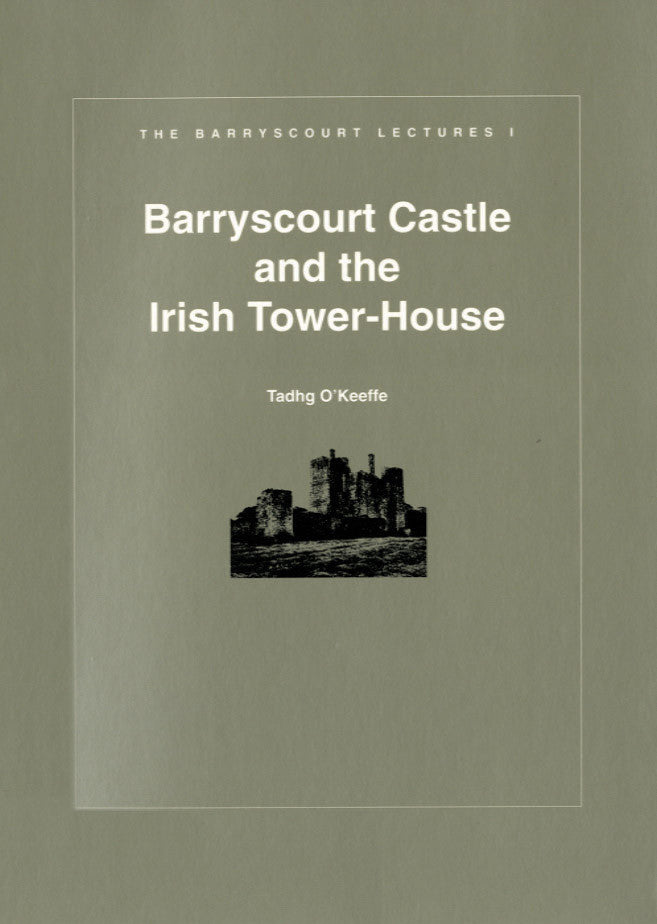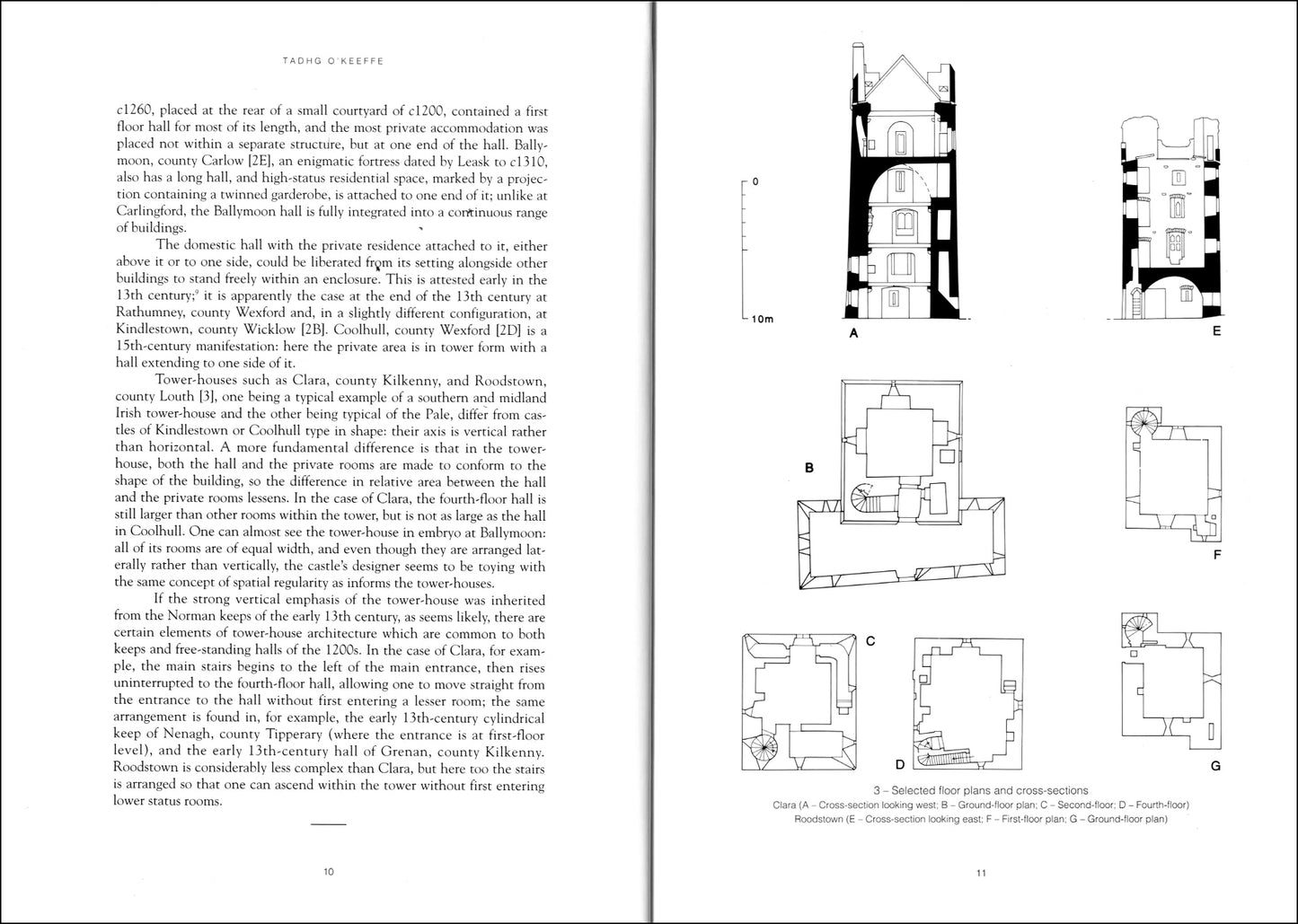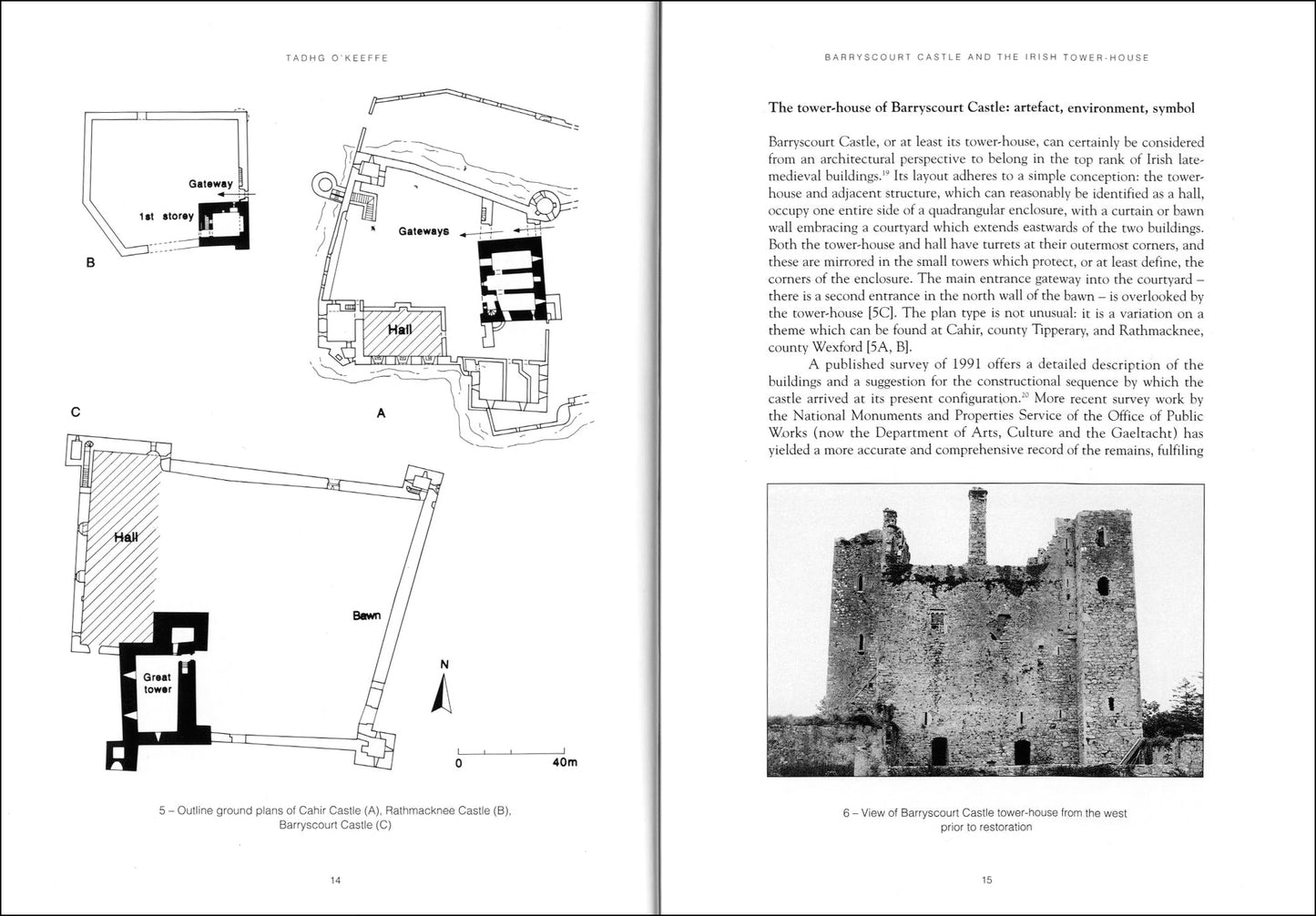Barryscourt Trust / Gandon Editions
Barryscourt Lectures 1 — BARRYSCOURT CASTLE AND THE IRISH TOWER-HOUSE
Barryscourt Lectures 1 — BARRYSCOURT CASTLE AND THE IRISH TOWER-HOUSE
Couldn't load pickup availability
Share
by Tadhg O’Keeffe
ISBN 978 0946641 826 32pp (pb) 24x17cm 15 illus
The tower-house is the late medieval Irish castle par excellence. From the 1300s to the 1600s the great majority of Irish castles included, or were comprised solely of, tower-houses. What is perhaps most remarkable about the tower-house tradition is that by the end of the 15th century, all three populations in medieval Ireland – the Gaelic Irish, the English and the gaelicised English – had embraced it. This book begins with an exploration of the beginnings of that tradition, before offering some reflections on Barryscourt Castle, and specifically on its main tower, which is one of the finest tower-houses in Ireland.
A very complete and satisfying little study. — Books Ireland
The reader is treated to an illuminating summary ... on this (until recently) rather neglected topic, which should be read by everyone interested in this subject.
— Paul MacCotter, Journal of the Cork Historical and Archaeological Society
This tower-house can be considered from an architectural perspective to belong to the top rank of Irish late medieval buildings. — Mary Leland, Irish Examiner
_____
EXTRACT
"The Irish adoption of the tower-house is a most interesting phenomenon. Between the 12th and 14th centuries, their preferred forms of settlement and domestic architecture are largely unknown to us, which is curious given the havoc the Gaelic Irish wreaked on the colony, both by territorial expansion and by cultural assimilation. The late middle ages would not have been first time that the medieval Gaelic Irish imported into their society a type of fortification which had originated elsewhere. One might think back to the pre-Norman 12th century. A consensus view of modern scholarship is that Ireland had already embraced feudalism by the time the Anglo-Norman conquest and settlement began in 1169.
Among the manifestations of this mode of social organisation in the early 1100s is the appearance in native sources of caistél or caislén. Even more than the great cathedrals of Europe, whose construction in the high middle ages – 12th to 14th centuries – was made possible by the feudal organisation of contemporary society, it was the castle which embodied the concept of feudalism, and the use of this word in an Irish environment signposts a society conscious of the symbolism of language.
The monuments themselves are unknown to us since none survives, but evidence which is largely circumstantial strongly indicates that for these castles, Irish kings, whom we know to have been embracing the pan-European Romanesque style for churches under their patronage, adapted the elevated settlement earthwork or motte, a monument then current in England and Continental Europe.
The adoption of the tower-house by the Irish does not, however, represent an anglicisation of Gaelic society, even though the tower-houses which inspired imitation were environments designed and equipped for the domestic rituals of colonial society. Henry Chrysted tells us that Ó Néill, Mac Murchada, Ó Briain and Ó Conchobhair adopted only temporarily the manners and styles of the English court following their acceptance of knighthoods from Richard II. Raymond, viscount of Perelhos and of Roda in Roussillon, encountered Ó Néill whilst journeying to St Patrick’s Purgatory in 1397. Despite having an inquiring interest in overseas customs, Ó Néill informed Raymond that he regarded Gaelic Irish customs as ‘the best and most perfect in the world’. Raymond observed a warrior society, living in poverty close to the cattle on which they depended; he noted that kings, bishops and others in the nobility went bare-legged and barefoot, and that neither women nor men were unwilling to expose their private parts."
— Tadhg O’Keeffe






